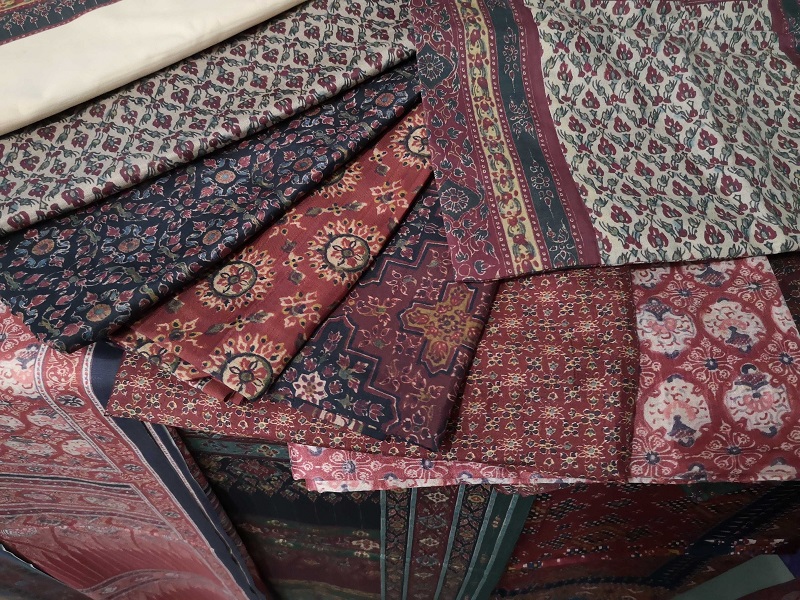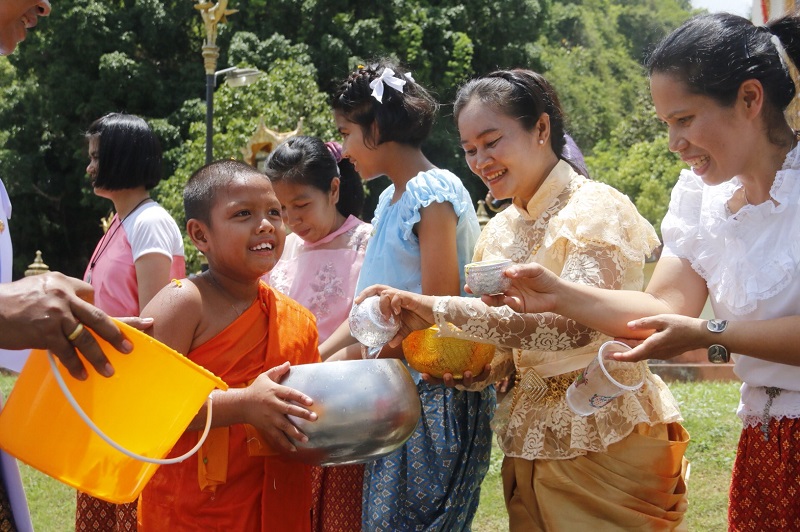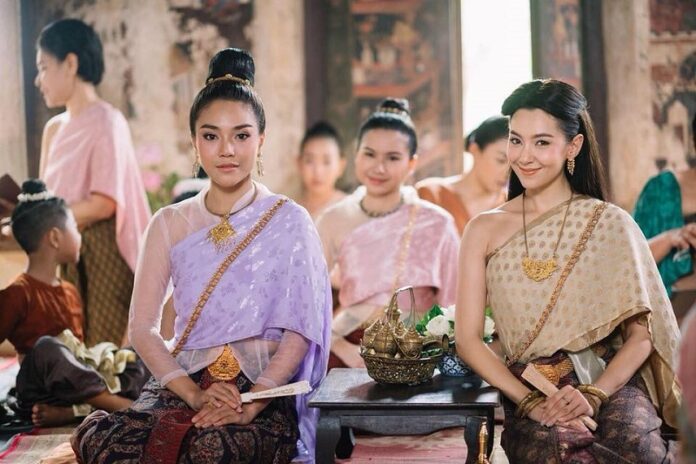
BANGKOK — More than a century ago during the reign of King Rama IV – before the rise of western clothing – elites wore high-grade finery to differentiate themselves from the lower classes.
But today, wearing traditional dress is simply about being fashionable and proud of Thailand’s heritage, insist artisans and designers.
Thirabhand Chandracharoen, a costume consultant to a number of award-winning Thai period-dramas and films, said there is a renaissance of interest in traditional dress. The expert credits the surge in demand to period soap operas, and a “winter fair” initiated two years ago by His Majesty the King called “Aun Ai Rak Klhai Kwam Nao” (Love and Warmth at Winter’s End) that encourages people to wear traditional costumes.
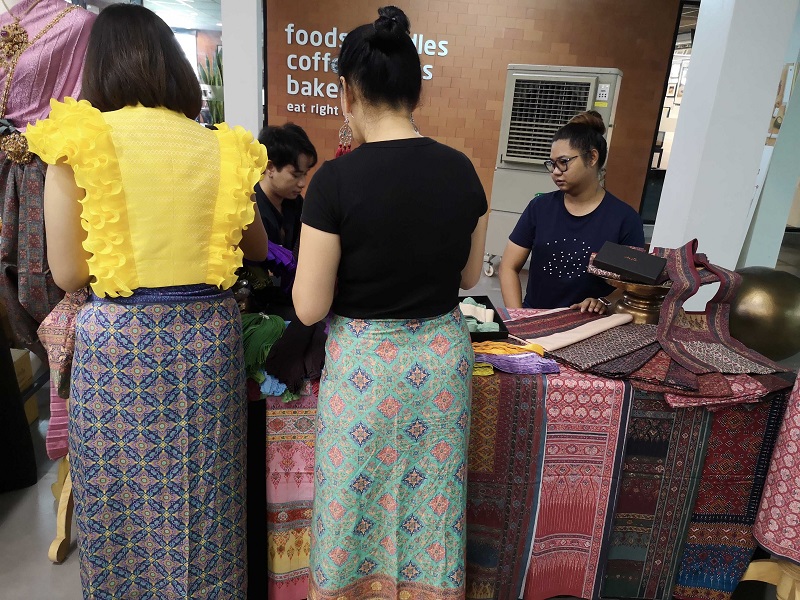
For Thirabhand, the key to pulling off traditional dress is feeling at ease. For those looking to try out the trend, he suggests a chong krabaen – a type of loincloth for all genders – or a sarong.
“Just wear it during the weekend at home and move around. You’ll discover new [sensations],” said the expert during a talk on traditional fabrics at Matichon Academy, a sister organization of Khaosod English.
During his talk, Thirabhand delved into the political function of clothing in Thai history in cementing class divisions. For example, a century-and-a-half ago, patterned light cotton and silk chintz had to be ordered from India and was the reserve of royals and aristocrats.
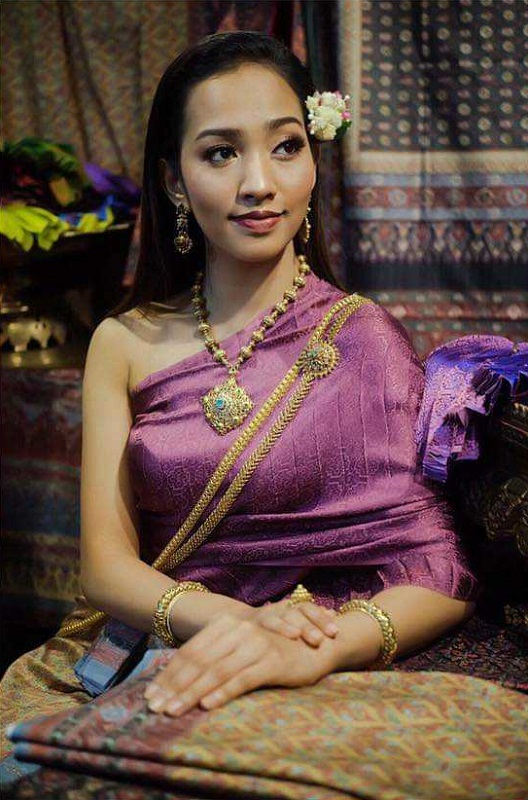
Patterned chintz was mostly produced in India’s Coromandel Coast, or Andhra Pradesh, after the pattern was drawn by Thai artisans.
“[In the past] how people dressed was used as a tool to rule. [The elites] didn’t need to do hard work and their hair was very well kept,” Thirabhand said, adding that even now-common fabrics like cotton were heavily starched, made shiny and perfumed by a process of boiling herbs.
To get away with wearing finery, one needed not only money but special social standing.
“Besides the Bunnag clan, you would not dare to wear [such clothing] even if you had money,” said Thirabhand.
Thirabhand advises those looking to recreate outfits true to history to pay attention to color combinations, which should not be too flashy and never monotone.
“Palace ladies and Bangkokians [of the olden days] did not wear everything in the same color. If you did, then you were part of the rural masses,” said Thirabhand, citing maroon and muted green as a good combination for women.
Today, traditionally patterned chintz in delicate cotton and silk has been revived, although virtually all purveyors use computers instead of woodblocks to aid in the printing process, said one maker of such fabric.
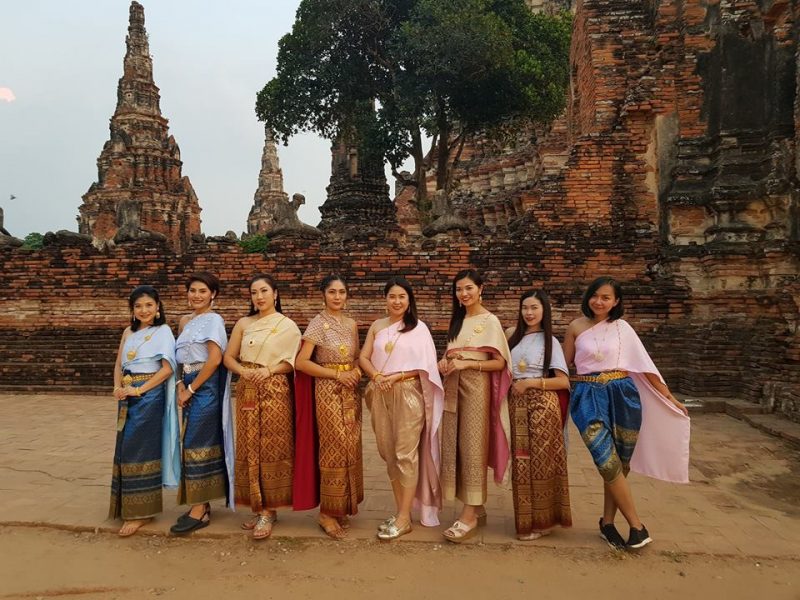
Nevertheless, traditional clothing still isn’t exactly cheap. Kaewmanee, a traditional dress brand of perhaps only a dozen or so, sells three-square-meter cotton sarongs for 5,000 baht a piece – or a third of Thailand’s monthly minimum wage. Silk chintz of the same size goes for 8,500 baht a pop.
Phiagsumal Yangkeawsod, one of the key artisans behind the five-year-old business, says the brand has rode the wave of renewed interest, selling online and at fairs.
Phiagsumal says Kaewmanee is supported by two main groups of customers, for which the brand has to source chintz – even by auction if necessary – to copy old patterns as closely as possible. The first group are Thai women over 40. The second group are gay clients in their late 20s.
Eager to preserve tradition, costume expert Thirabhand proposes educating children around properly wearing it. Some Thais resort to wearing ready-made chong krabaen that don’t require mastering the wrapping and tugging method, but Thirabhand believes this can be avoided with practice from an early age.
“This is something that needs to be inculcated,” said Thirabhand.
